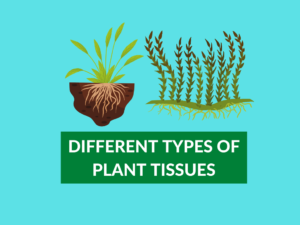Perisperm vs Pericarp: Understanding the Differences
What is the difference between perisperm and pericarp? In the world of plants, there are various structures that play vital roles in seed development and protection. Perisperm and pericarp are two such structures that often confuse people due to their similar-sounding names. However, they serve different purposes and have distinct characteristics. This article aims to provide a comprehensive understanding of perisperm and pericarp, their examples, uses, and most importantly, the differences between them.
What is Perisperm?
Perisperm refers to the nutritive tissue that surrounds the embryo in certain seeds. It acts as a food reserve for the developing embryo, providing it with the necessary nutrients to ensure successful germination and early growth. Perisperm is typically formed by the proliferation of the nucellus, a tissue that exists in the ovule.
Examples of Perisperm
Perisperm is found in various plant species, including legumes such as peas, lentils, and beans. In these plants, the perisperm is stored within the seed coat and provides nourishment to the growing embryo.
Uses of Perisperm
The primary function of perisperm is to provide nourishment to the developing embryo. It serves as an energy source by storing carbohydrates, proteins, and lipids. Additionally, perisperm also plays a role in protecting the embryo from mechanical damage and desiccation.
What is Pericarp?
Pericarp, on the other hand, refers to the protective layer that surrounds and encloses the seed. It is derived from the wall of the ovary and consists of three layers: the exocarp (outer layer), the mesocarp (middle layer), and the endocarp (inner layer).
Examples of Pericarp
Pericarp is present in a wide range of fruits such as apples, oranges, and berries. In these fruits, the pericarp is the edible part that encompasses the seeds. The different layers of the pericarp may vary in thickness and texture depending on the fruit type.
Uses of Pericarp
The main purpose of the pericarp is to protect the enclosed seeds and aid in their dispersal. It may provide physical protection against external factors, such as pests or harsh environmental conditions. Additionally, many fruits rely on the pericarp to attract animals for seed dispersal through mechanisms like color and aroma.
Differences Between Perisperm and Pericarp
| Difference Area | Perisperm | Pericarp |
|---|---|---|
| Growth Origin | Derived from nucellus tissue | Derived from ovary wall |
| Structure | Single layer of nutritive tissue | Three-layered protective covering |
| Composition | Stores carbohydrates, proteins, and lipids | Varies depending on fruit type |
| Function | Provides nourishment to the embryo | Protects seeds and aids in dispersal |
| Presence | Found in certain seeds | Found in fruits |
| Location | Within the seed | Surrounding the seeds |
| Edibility | Not typically edible | May be edible depending on the fruit |
| Seed Development | Ensures successful germination and early growth | Protects seeds and facilitates dispersal |
| Seed Production | Present in specific seed types | Present in various fruit types |
| Species Examples | Peas, lentils, beans | Apples, oranges, berries |
Conclusion
Perisperm and pericarp are two distinct structures in plants that serve different purposes. Perisperm is a nutritive tissue found in certain seeds, providing nourishment to the developing embryo. Pericarp, on the other hand, is the protective layer surrounding the seeds in fruits, aiding in their dispersal. Understanding these differences is crucial for studying plant development, seed production, and the diversity of fruits.
People Also Ask
Q: How does perisperm contribute to seed development?
A: Perisperm acts as a food reserve, supplying nutrients for the developing embryo during germination and early growth.
Q: Can you eat pericarp?
A: The edibility of pericarp depends on the fruit. Some fruits have edible pericarp, while others do not.
Q: What is the main function of pericarp?
A: The primary function of pericarp is to protect the enclosed seeds and facilitate their dispersal through various mechanisms.
Q: Are perisperm and pericarp present in the same plants?
A: No, perisperm is found in specific types of seeds, whereas pericarp is present in various types of fruits.
Q: How is perisperm derived?
A: Perisperm is derived from the proliferation of the nucellus tissue in the ovule.


